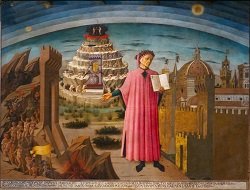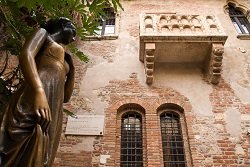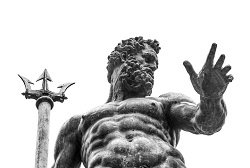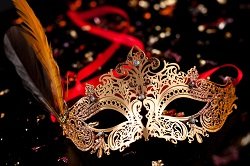Italian Dance 101 - Tarantella, Laccio D'Amore, Monferrina
While traditional folk dances are not something you will usually see during a visit to Italy (unless you end up in a village during some sort of traditional festival), it does not mean that there aren't a few outstanding Italian dances – and there is also quite an interesting history attached to the role of dancing in Italy. In addition, the Italians were the ones who invented ballet (you can read more about that in Italian Sport 101). Here, we will have a look at the beginnings of Italian dancing, and then introduce a few popular dances to you.
Dancing through the ages
It is assumed that dancing played a role in Italian social life before the 12th century, but the earliest mentions of dancing in Italy can be found in Dante's and Giovanni del Virgilio's texts. The dances they described were circle dances that were performed either by people just coming from a church or by groups of people during social gatherings. Those dances were always group dances, and not dances with individual couples. Often, the dances were used to accompany the telling of a story.
There are a few surviving pieces of music from the 14th century that might – or might not – have been music for dances, so it is assumed that music and dance played some role during the 14th century in Italy. However, it is noticeable that no writer had written down any instructions for dances. It is assumed that this is simply the case because everybody knew how to dance and that the art of dance was not one to be taught by reading descriptions.
The first written dance manuals in Italy
In the 15th century this changed. Dances became a more important part of life, especially of the richer classes. Dances also became more complicated than the simple folk dances of the earlier centuries. And with the new complexity of dances, it then also was necessary to have dance manuals. The three first dance manuals that are known in Italy are “De arte saltandi & choreas ducendi. De la arte di ballare et danzare” written by the dancing master Domenico da Piacenza, who lived sometime between 1400 and 1470 (exact year of birth and death are not known)
“Libro del'arte del danzare” by Antonio Comazano, who was not just a dance master but also known as a poet, biographer and general writer “De practica seu arte tripudii vulgare opusculum” by Guglielmo Ebreo da Pesaro, who was one of the masters of dance and highly respected. He was someone who described dance as a noble art and also wrote about the importance of the right music.
During that time, dances between couples also started to emerge in addition to the ever popular group dances. One thing you can notice is that court and country dances often took elements from each other, and often the only difference between the two was the amount of elegance and general style (with court dances naturally being the ones during which there was a bigger focus on elegance).
From that time onwards, dancing developed more and more. Today, you will not find many folk dances danced in Italy – but there is an active dance community. You'll find modern dance, ballroom dance, and lots of Latino inspired dancing.
Italian dances with weapons
Like many other countries, the Italians also had quite a good selection of dances that included weapons (which ranged from simple wooden sticks to actual swords). These types of dances can range from just one person to a couple fighting against each other to a whole group of dancers dancing in a mock battle. The bigger mock battle dance scenarios were always quite popular, but also needed some preparation as the dancers were not really supposed to hurt each other during the battle dances.
A weapon dance like the Spadonari di Venaus, which originated in Venaus, can take up to one hour. It is not only a dance, but also a showcase of the dancers' skill with their weapons. Naturally, not everybody is suited to take part in a dance with weapons.
Some traditional Italian folk dances
Tarantella
The Tarantella is one of the traditional folk dances that is often mentioned. Even Casanova was mentioned dancing this dance. Seeing that the Tarantella is some sort of courtship dance, the connection does not seem to be much of a surprise. Note: Tarantella is actually a group of dances, and not all of them are just dances for couples. There are big regional differences, too.
Laccio D'Amore
This dance comes from the more central regions of Italy and is usually danced by twelve couples. The dance actually consists of a combination of different dances, with one of the dances being a dance during which the men try to win the women over with their dance around them.
Monferrina
This dance actually became popular in England, too, during the 18th century. It also is a dance that is danced by a few couples, and it usually is quite lively. It is a fun dance and quickly spread through Italy – and then even on to other countries.
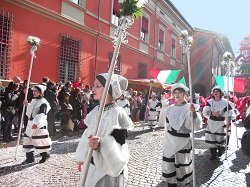

_(2).jpg)
